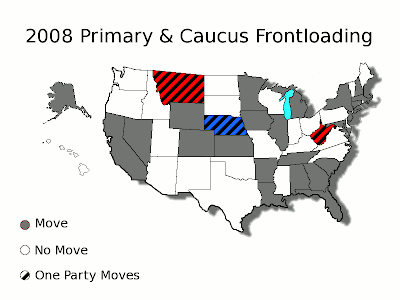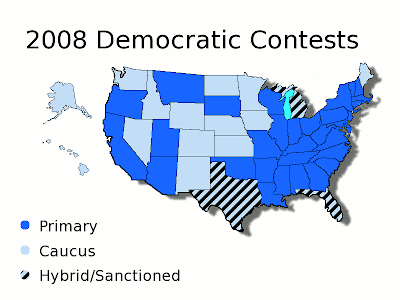Prior to 2002
The governor had the ability to appoint someone to such a vacancy and the appointee didn't have to stand for election until the next election period.
|
|
|
2002
Frank Murkowski is elected governor, resigns his Senate seat and appoints his daughter to fill the Senate vacancy. Lisa Murkowski doesn't have to face the voters until 2004.
|
|
|
2004
The Alaska legislature acts to close the loophole, granting the governor the option of appointing a replacement on an interim basis until a special election can be held within 60-90 days.
|
Wanting to remove the governor from the equation altogether, a petition-triggered initiative (Prop 4) was, upon challenge, ruled sufficiently different from the original law by the Alaska Supreme Court and subsequently passed.
|
|
|
2008
Governor Sarah Palin is named vice presidential running mate by John McCain. Senator Ted Stevens is convicted of seven felony counts and the whole discussion begins as to what the correct senatorial succession procedure is.
Essentially what's at stake here is that if Stevens wins and is forced from his position in the Senate, Sarah Palin will have a decision to make: wait the 60-90 days until the special election is held, or test that initiative by appointing someone in the interim. It isn't a Florida 2000-type constitutional crisis, but it is an interesting constitutional situation, nonetheless. And when you throw in the possibility of the former vice presidential nominee appointing herself as a stepping stone to 2012, it gets even better.
For a more detailed explanation of the situation, see the following link.
Recent Posts:
More on the Georgia Senate Runoff
Omaha to Obama
A Slideshow Chronology of the Electoral College on Election Night
The governor had the ability to appoint someone to such a vacancy and the appointee didn't have to stand for election until the next election period.
|
|
|
2002
Frank Murkowski is elected governor, resigns his Senate seat and appoints his daughter to fill the Senate vacancy. Lisa Murkowski doesn't have to face the voters until 2004.
|
|
|
2004
The Alaska legislature acts to close the loophole, granting the governor the option of appointing a replacement on an interim basis until a special election can be held within 60-90 days.
|
Wanting to remove the governor from the equation altogether, a petition-triggered initiative (Prop 4) was, upon challenge, ruled sufficiently different from the original law by the Alaska Supreme Court and subsequently passed.
|
|
|
2008
Governor Sarah Palin is named vice presidential running mate by John McCain. Senator Ted Stevens is convicted of seven felony counts and the whole discussion begins as to what the correct senatorial succession procedure is.
Essentially what's at stake here is that if Stevens wins and is forced from his position in the Senate, Sarah Palin will have a decision to make: wait the 60-90 days until the special election is held, or test that initiative by appointing someone in the interim. It isn't a Florida 2000-type constitutional crisis, but it is an interesting constitutional situation, nonetheless. And when you throw in the possibility of the former vice presidential nominee appointing herself as a stepping stone to 2012, it gets even better.
For a more detailed explanation of the situation, see the following link.
Recent Posts:
More on the Georgia Senate Runoff
Omaha to Obama
A Slideshow Chronology of the Electoral College on Election Night











